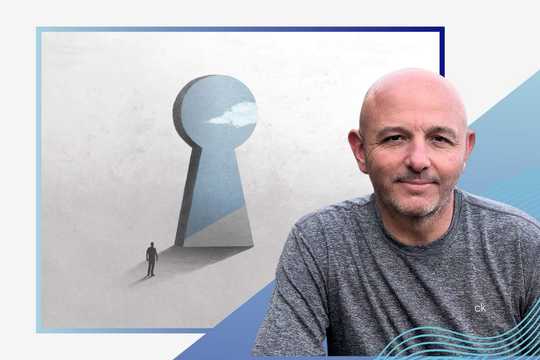If someone mentions they have thoughts about hurting themselves, always take them seriously and get help. Don’t be afraid to ask. It can be as simple and direct as saying, “Are you thinking of killing yourself?”
Please reach out to the 988 Suicide & Crisis Lifeline to get free and confidential support from a trained counselor if you or someone you care about is experiencing suicidal thoughts.
Call 911 if you or a loved one are in immediate danger.
What is Suicide?
Suicide is death caused by self-directed injurious behavior with the intent to die as a result of the behavior. It is often the result of a complex interplay of psychological, social, and environmental factors.
We refer to an attempt to end one’s life that does not result in death as a suicide attempt. These attempts can result in physical injury, psychological distress, and long-term impacts on mental health.
“Recognizing the warning signs of suicide is crucial for early intervention and potentially saving a life. The[re]…are some common signs that someone is thinking about suicide.”
— Katharine Chan, MSc, BSc, PMP
Global Statistics
According to the World Health Organization (WHO), approximately 703,000 people die by suicide each year worldwide. Suicide is a serious global public health issue occurring in every region of the world.
It is a devastating event that impacts families, communities, and entire nations, leaving lasting effects on those who are left behind. Suicide can occur at any stage of life; in 2019, it was the fourth leading cause of death among 15- to 29-year-olds worldwide.
Suicide is not limited to high-income countries; it is a global issue affecting all regions. Over 77% of suicides globally in 2019 occurred in low- and middle-income countries.
US Statistics
In the United States, suicide is a leading cause of death. In 2022, there were approximately 49,476 recorded deaths by suicide, which is about one death every 11 minutes.
Suicide was among the top 9 leading causes of death for people ages 10 to 64 in 2022 and was the second leading cause of death for people ages 10 to 14 and 25 to 34. Suicide is a critical public health concern that we can prevent with timely, evidence-based, and often low-cost interventions.
Factors That May Increase Suicide Risk
Some populations have higher rates of suicide. Contributing factors that may increase someone’s risk include the following:
- Mental Health Conditions: Populations with mental health conditions, such as depression, bipolar disorder, schizophrenia, and anxiety disorders, have a higher suicide rate. Substance use disorders, including alcohol and drug abuse, may also contribute to someone’s risk of suicide.
- Previous Suicide Attempts: A history of previous suicide attempts is one of the strongest predictors of future suicide attempts or death by suicide.
- Chronic Illness and Pain: Chronic physical health conditions, particularly those that cause persistent pain, can increase the risk of suicide.
- Family History: A family history of suicide, substance use, or mental disorder can increase an individual’s risk of suicidal behavior.
- Trauma and Abuse: Individuals who have experienced trauma, abuse, or violence (including physical, sexual, or emotional abuse) are at greater risk for suicide.
- Social Isolation: Loneliness and social isolation are significant risk factors, particularly among older people or those who have recently lost a loved one.
- Cultural and Socioeconomic Factors: Certain cultural, social, and economic factors can increase suicide risk, including stigma associated with seeking help, unemployment, financial difficulties, and discrimination.
- LGBTQIA+ Community: Individuals who identify as LGBTQIA+ are at an elevated risk for suicide, particularly if they face discrimination, rejection, or lack of support from their family or community.
- Access to Means: Easy access to lethal means, such as firearms, can increase the risk of suicide.
- Major Life Events: Stressful experiences such as the death of a loved one, money troubles, legal issues, or job loss can contribute to the risk of suicide.
Suicide Among Veterans
Veterans are 1.5 times more likely to die by suicide than adults who are not veterans. The combination of high exposure to trauma, mental health issues, stress and burnout, loneliness and isolation, challenges in transitioning to civilian life, physical health problems, and easy access and familiarity with firearms contribute to the elevated suicide rate among veterans.
Addressing these factors through targeted mental health support, reducing stigma, improving access to care, and enhancing support systems for veterans is crucial in suicide prevention within this population.
Navigating Trauma, Depression, and Anxiety: Key Articles
- Recognize the 7 Types of Trauma Like a Psychotherapist
- Discover the Secret to Identifying Trauma Symptoms
- Learn about The Root Cause of Anxiety and Depression
- Understand How to Recognize the Hidden Signs of Depression
- Explore What Causes Depression: It’s Not Always Preventable
Warning Signs For Suicide
Recognizing the warning signs of suicide is crucial for early intervention and potentially saving a life. The following are some common signs that someone is thinking about suicide:
Verbal Cues
- Talking about wanting to die or kill oneself: Statements like “I wish I were dead” or “I can’t go on” should be taken seriously.
- Expressing hopelessness: Phrases like “There’s no way out” or “Things will never get better” indicate a loss of hope.
- Discussing being a burden: Comments such as “Everyone would be better off without me” suggest feelings of worthlessness or being a burden to others.
Behavioral Signs
- Pulling away from loved ones: Distancing oneself from family, friends, or social activities can indicate a person is contemplating suicide.
- Giving away possessions: Suddenly giving away prized possessions or making arrangements for their belongings can indicate planning for death.
- Risky or self-destructive behavior: Engaging in reckless activities, such as driving dangerously or using drugs, may reflect a disregard for their safety and well-being.
- Increased use of alcohol or drugs: Turning to substances to cope with emotional pain or to escape reality can be a warning sign of suicidal ideation.
- Changes in sleep patterns: Sleeping too much or too little or experiencing severe insomnia can be a sign of mental distress.
- Sudden mood changes: A sudden shift from depression to calmness or appearing cheerful after a long period of sadness can indicate that a person has made the decision to attempt suicide.
Emotional Signs
- Extreme mood swings: Drastic changes in mood, from deep depression to intense agitation, may indicate suicidal thoughts.
- Despair and hopelessness: Persistent feelings of despair, worthlessness, or a sense that life has no purpose can be warning signs.
- Feeling trapped: Expressing feelings of being trapped or in unbearable pain, whether emotional or physical, can signal suicidal thoughts.
- Sudden calmness: After a period of depression, a sudden sense of calm or peace may suggest that a person has decided to end their life.
Physical Signs
- Neglecting personal appearance: A noticeable decline in grooming or self-care might indicate a lack of interest in life.
- Unexplained physical pain: Chronic, unexplained pain or worsening health conditions can contribute to suicidal thoughts.
Social and Situational Signs:
- Recent trauma or loss: Experiencing a significant loss, such as the death of a loved one, a breakup, or financial problems, can trigger suicidal thoughts.
- Bullying or harassment: Ongoing harassment, whether in person or online, can lead to feelings of hopelessness, particularly in young people.
- Sudden life changes: Major changes, such as a job loss or legal issues, can increase the risk of suicide.
Follow your Curiosity
Sign up to receive our free psychedelic courses, 45 page eBook, and special offers delivered to your inbox.Lastly, if someone is looking for a way to end their life, we must take this very seriously. Such behavior could look like researching methods of suicide or seeking access to firearms, pills, or other means.
#BeThe1To Help Save A Life: 5 Actions Steps
The #BeThe1To campaign outlines five key steps (Ask, Be There, Help Keep Them Safe, Help Them Connect, and Follow Up) you can take to support someone who may be experiencing suicidal thoughts. Experts designed these steps to guide you in providing immediate and compassionate help:
1. Ask
Directly ask the person if they are thinking about suicide. Asking this can be difficult, but it is crucial to open the conversation.
You can ask in a way that feels natural, such as, “Are you thinking about ending your life?” or “Have you been having thoughts about suicide?”
The 9–8–8: Suicide Crisis Helpline of Canada published the following phrases to use when talking to someone you are worried about:
- “Are you doing ok? I’ve noticed you haven’t been yourself recently.”
- “I’m worried about you. Whatever you tell me, I won’t judge you.”
- “It seems like you are going through a lot. I care about you, and I want to help.”
- “What are you feeling?”
- “Are you having thoughts of ending your life?”
- “Are you thinking about suicide?”
- “You deserve help. It seems like you are going through a lot.”
- “You are not alone. I’m here to listen.”
- “Tell me more about that. That’s a lot to carry.”
- “I see that you are in a lot of pain.”
Asking questions or using statements like these shows that you care and are willing to listen. It can also provide relief to the person, as they may be looking for an opportunity to talk about their feelings.
2. Be There
Offer your presence and support. This can mean physically being with the person or connecting with them through a phone call, video chat, or text if you can’t be there in person.
Listen without judgment, show empathy, and let them express their feelings. Avoid offering solutions right away — just be a supportive presence. Don’t promise to do anything you aren’t able to do. It’s critical to follow through on everything you say you will do.
Your presence can help reduce feelings of isolation and despair. It reinforces that they are not alone and that someone cares about their well-being.
3. Help Keep Them Safe
This step focuses on putting time and distance between the person and their chosen method.
If the person is at immediate risk, take steps to reduce their access to means of suicide, such as firearms, medications, or other dangerous items. A course of action like this may mean calling for emergency help or driving them to an emergency department.
Have they tried hurting themselves before talking to you? Ask if they have a plan for how they would end their life. Is this plan specific and detailed? Work with them to remove or limit access to these methods.
Limiting access to lethal means can provide time to get the person the help they need and can prevent impulsive behaviors.
4. Help Them Connect
Connect the person to professional support, such as a therapist, counselor, or suicide prevention hotline. Encourage them to reach out to trusted friends, family members, or community resources. Work with them to develop a safety plan that may include how to identify if they start having thoughts of suicide, what to do during crisis moments, and who to contact during this time.
Assist them in finding resources, making appointments, or contacting a crisis line, such as the 988 Suicide & Crisis Lifeline. Building a support network helps the person feel less isolated in their journey to recovery.
5. Follow Up
After your initial conversation, check in with the person regularly to see how they are doing. Simple follow-up messages or calls can show that you care and that they matter to you.
You might say, “I’ve been thinking about you and wanted to see how you’re doing today,” or, “I’m here if you need anything.”
Following up can help reduce the risk of suicide by reminding the person that they have ongoing support. It also reinforces that their life is important and that someone is looking out for them.
Taking these five steps — Ask, Be There, Help Keep Them Safe, Help Them Connect, and Follow Up — can make a significant difference in the life of someone having suicidal thoughts.
Suicide is a serious and devastating issue that affects people worldwide. Understanding the risk factors and warning signs can help in preventing suicide and providing support to those in need.
Other Helpful Resources
- American Foundation for Suicide Prevention: The AFSP is a “voluntary health organization that gives those affected by suicide a nationwide community empowered by research, education, and advocacy to take action against this leading cause of death.”
- Suicide Awareness/Voices of Education: Suicide Awareness Voices of Education is a “national nonprofit working to end the tragedy of suicide through education, training, advocacy, and supporting suicide loss survivors.”
- The Veterans Crisis Line: The Veterans Crisis Line is a “free, confidential resource that connects you to a real person specially trained to support Veterans.”
References
Talk Suicide Canada. (2024, July 31). Talk to Someone You Are Worried About. 9–8–8: Suicide Crisis Helpline. https://988.ca/get-help/talk-to-someone-you-are-worried-about
988 Suicide and Crisis Lifeline. (2023, November 8). How The 5 Steps Can Help. #BeThe1To. https://www.bethe1to.com/bethe1to-steps-evidence/
U.S. Centers for Disease Control and Prevention (CDC). (2024, April 25). Facts About Suicide. CDC Suicide Prevention. https://www.cdc.gov/suicide/facts/index.html
DeAngelis, T. (2022, November 1). Veterans Are at Higher Risk for Suicide. Psychologists Are Helping Them Tackle Their Unique Struggles. American Psychological Association: Monitor on Psychology, 53(8), 56. https://www.apa.org/monitor/2022/11/preventing-veteran-suicide
National Institutes of Health (NIH). (2023). Frequently Asked Questions About Suicide. National Institute of Mental Health. https://www.nimh.nih.gov/health/publications/suicide-faq
National Institutes of Health (NIH). (2022). Warning Signs of Suicide. National Institute of Mental Health. https://www.nimh.nih.gov/health/publications/warning-signs-of-suicide
World Health Organization (WHO). (2024, August 29). Suicide. World Health Organization. https://www.who.int/news-room/fact-sheets/detail/suicide






